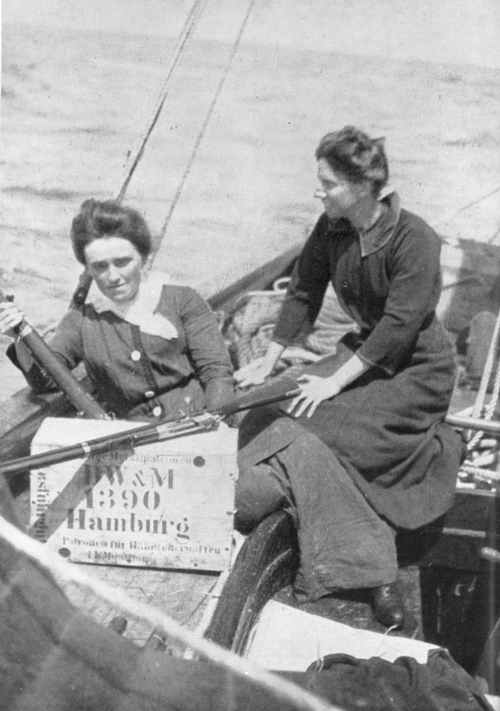Ihe landing of arms at Larne on 30 March 1914 prompted the Irish Volunteers to purchase and bring ashore their own arms shipment. The O’Rahilly directed Darrell Figgis and Erskine Childers to a firm in Hamburg, where they purchased 1,500 rifles and 45,000 rounds of ammunition.
![Molly Childers and Mary Spring-Rice aboard the Asgard. (F.X. Martin, The Howth gun-running and the Kilcoole gun-running, 1914 [Dublin, 1964])](https://historyireland.com/wp-content/uploads/2014/05/Mrs-Childers-and-Mary-S-R-210x300.png)
Historian Alice Stopford Green was responsible for raising most of the £1,500 for the purchase. The largest single contributor was George Fitz Hardinge Berkeley, with Mrs Green the next largest subscriber—Roger Casement and Childers and his wife subscribed the rest of the money. Initial planning meetings were held at Green’s home, attended by Casement, Childers, Dermot Coffey, Figgis, Bulmer Hobson, Seán MacDermott, Eoin MacNeill, Conor O’Brien, O’Rahilly and Mary Spring-Rice (who wrote to O’Rahilly suggesting it).
On 26 July 1914 Childers’s yacht, the Asgard, landed 900 rifles and 26,000 rounds of ammunition at Howth, just north of Dublin. On board were Childers, his wife Molly, Mary Spring-Rice, an English army officer named Gordon Shephard, and two Donegal fishermen, Patrick McGinley and Charles Duggan. A smaller part of the shipment was landed at Kilcoole, Co. Wicklow, on 1 August 1914. Sir Thomas Myles, a lifelong nationalist, picked up 600 rifles and 19,000 rounds of ammunition from Conor O’Brien’s Kelpie, which had delivered them from Germany to the Welsh coast. Myles then sailed them in his vessel, Chotah, to Kilcoole. James Creed Meredith (a Protestant, who later served as president of the Dáil supreme court from 1920 to 1922) crewed for him.
John Gore, an elderly solicitor and first hon. treasurer of the Irish Volunteers, lived at 6 Cavendish Row. Bulmer Hobson said of him: ‘He was not noted for his reticence’. Hobson purposefully misled him, telling him that the guns to be landed at Howth were to be landed at Wexford. Hobson expected that Gore would repeat this to all of his clients ‘in confidence’. Whether he did or not, the British Navy’s HMS Panther, which had been anchored in Dublin Bay, steamed south to Wexford. On Sunday, while the arms were brought ashore in Howth, the Panther was immobilised in Wicklow because the crew had been given shore leave.
About 800 Volunteers mustered and marched out to Howth. The rifles were Mausers, Gewehr 98s, .31 calibre with a five-shot magazine, and had been captured from the Russians by German forces. Following the retrieval of the arms, three civilians were killed and more than 35 were seriously injured when fired on by the King’s Own Scottish Borderers (quickly nicknamed the ‘King’s Own Scottish Murderers’ by Dubliners) on Bachelor’s Walk. About 100 of the Borderers under the command of Captain Cobden had marched toward Howth, where there was a confrontation with the Volunteers. Negotiations took place between the Volunteers and William Vesey Harrell, assistant commissioner of the Dublin Metropolitan Police (DMP), who called in the military. The troops continued towards the city and were met along the way by a further 60 men under the command of Major Coke. They were goaded continuously by civilians along the route, and when they turned from Sackville Street onto Bachelor’s Walk command was turned over to Major Haig. A British inquiry found that Harrell had decided illegally to seize the arms from the Volunteers, and everything that happened thereafter was illegal. Those killed were James Brennan, Mrs Mary Duffy (mother of a soldier serving in the British army) and Patrick Quinn.
Joseph E. Connell Jr is the author of Dublin in rebellion: a directory, 1913–1923 (Lilliput Press, 2006).
Further reading
F.X. Martin, The Howth gun-running and the Kilcoole gun-running (Dublin, 1964).

